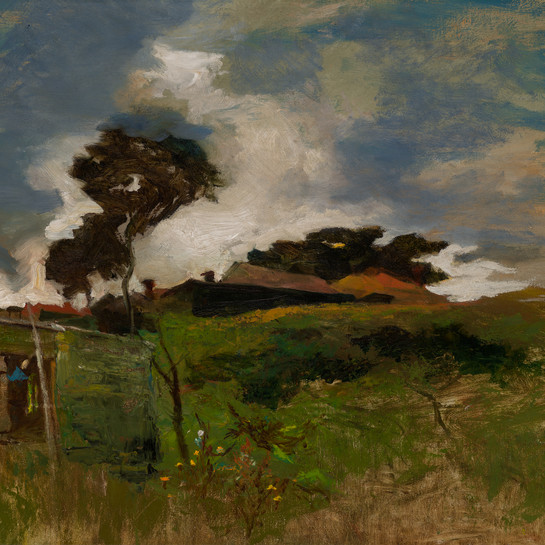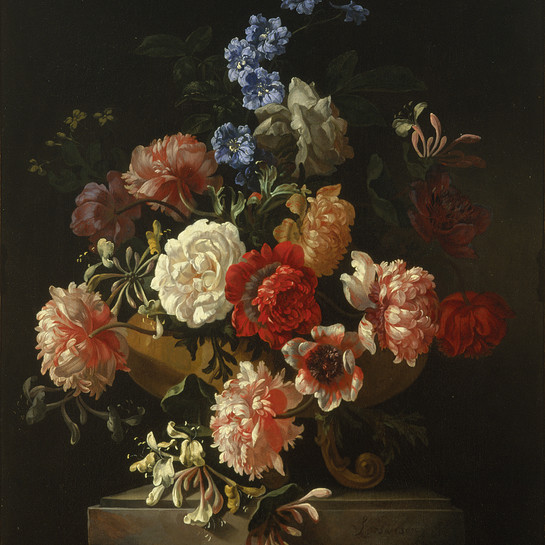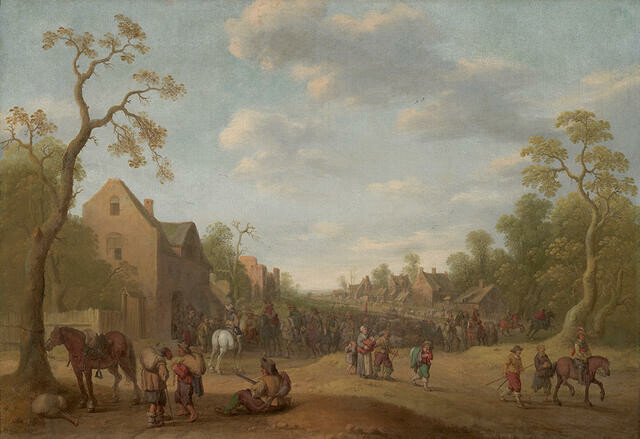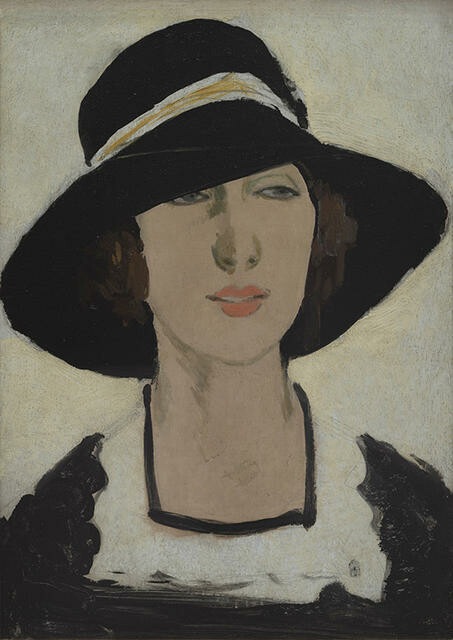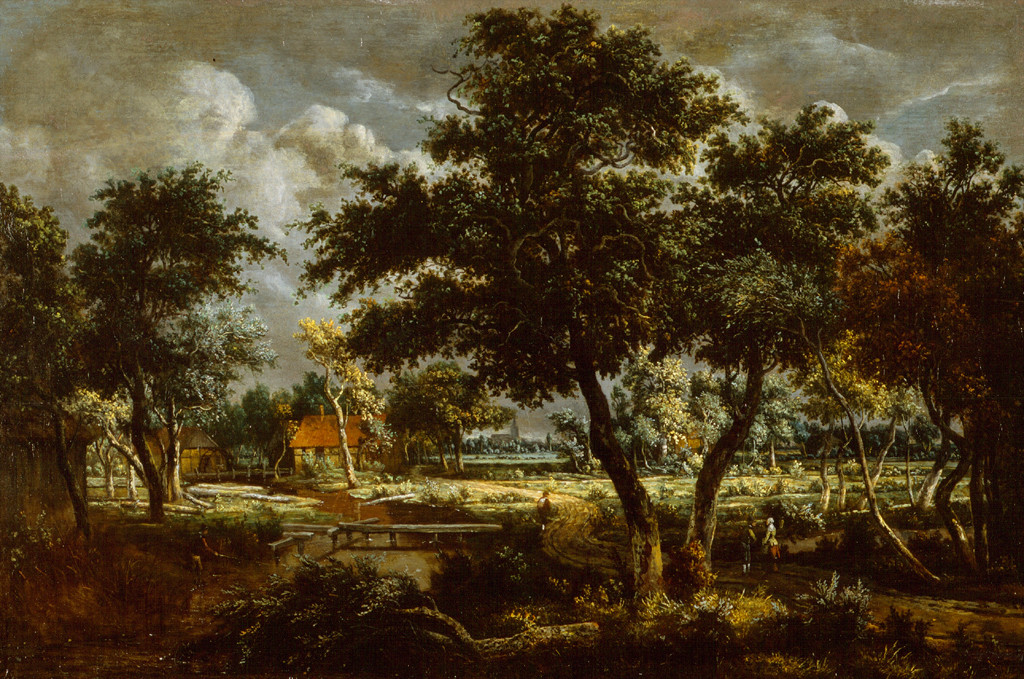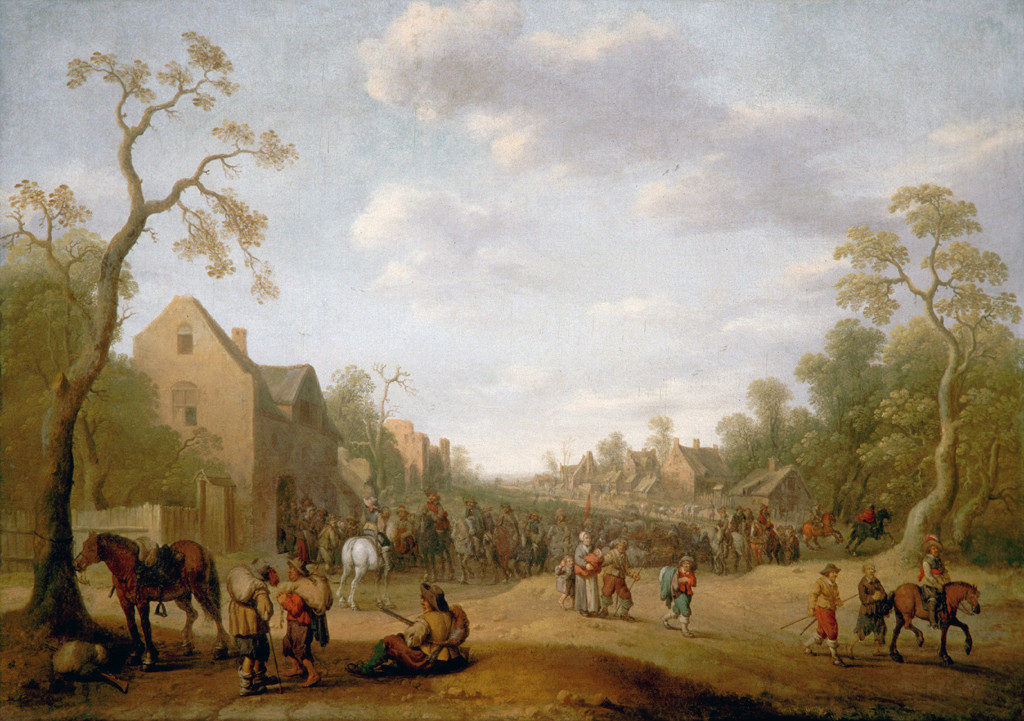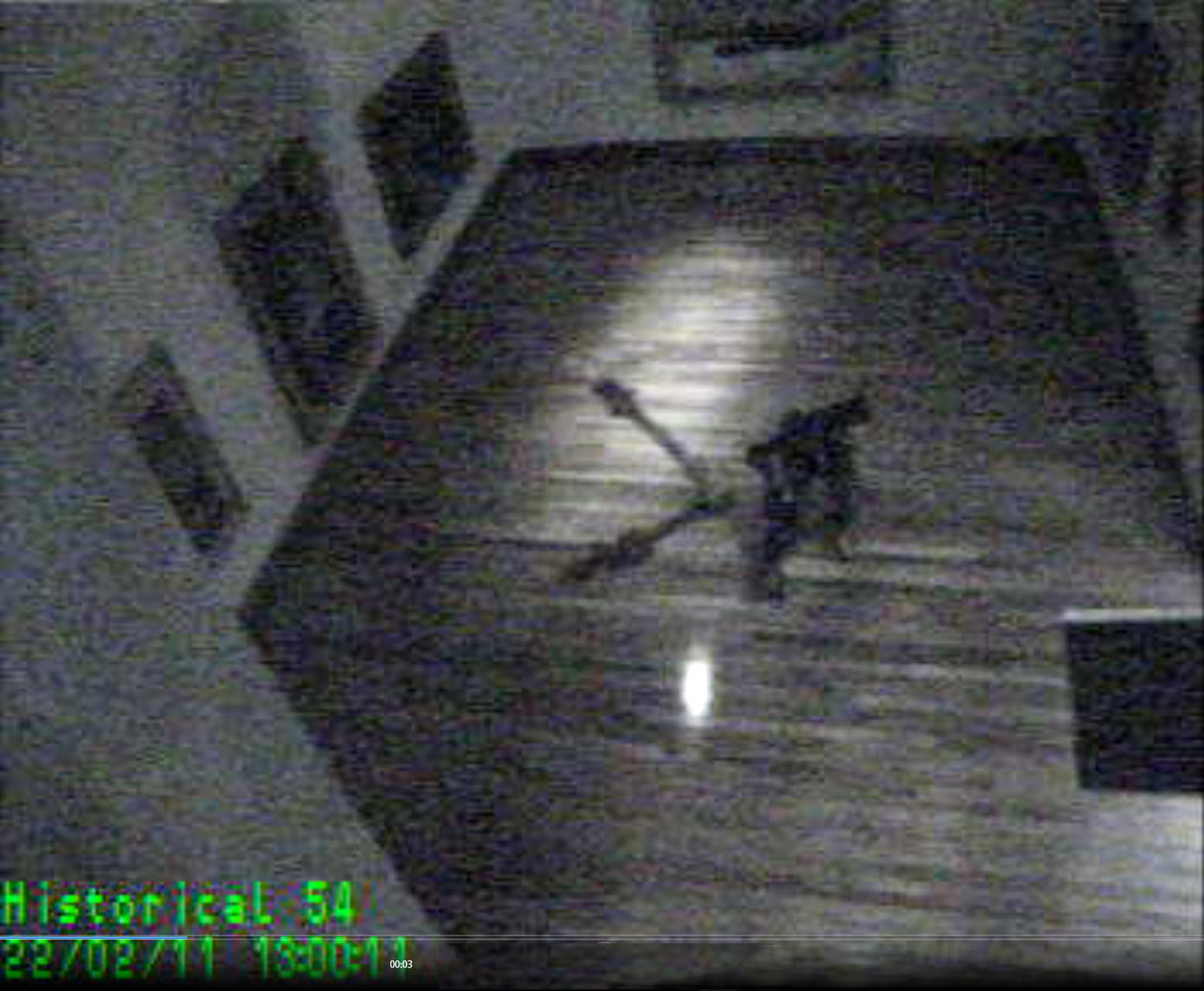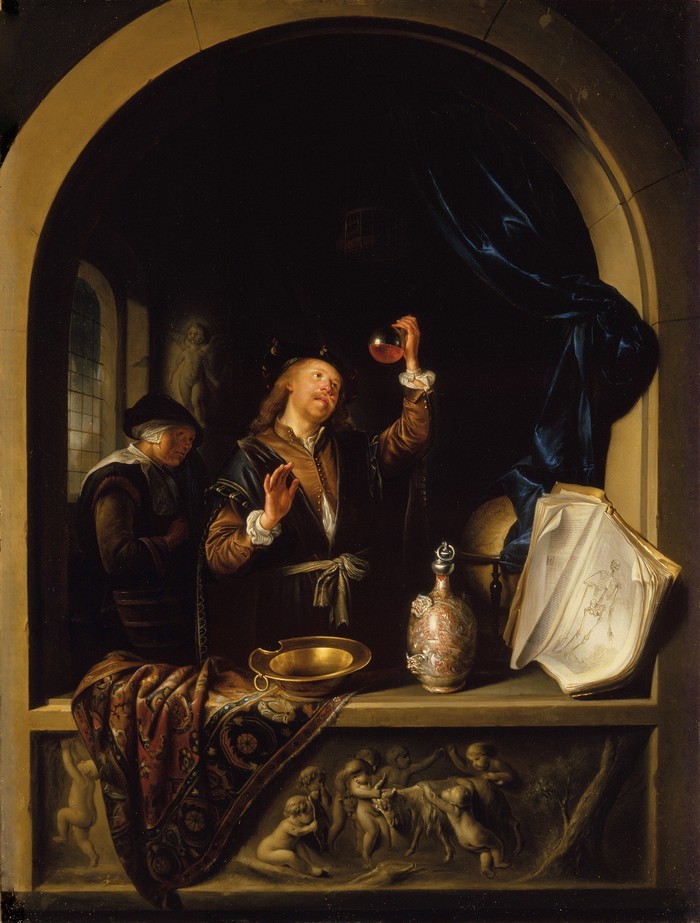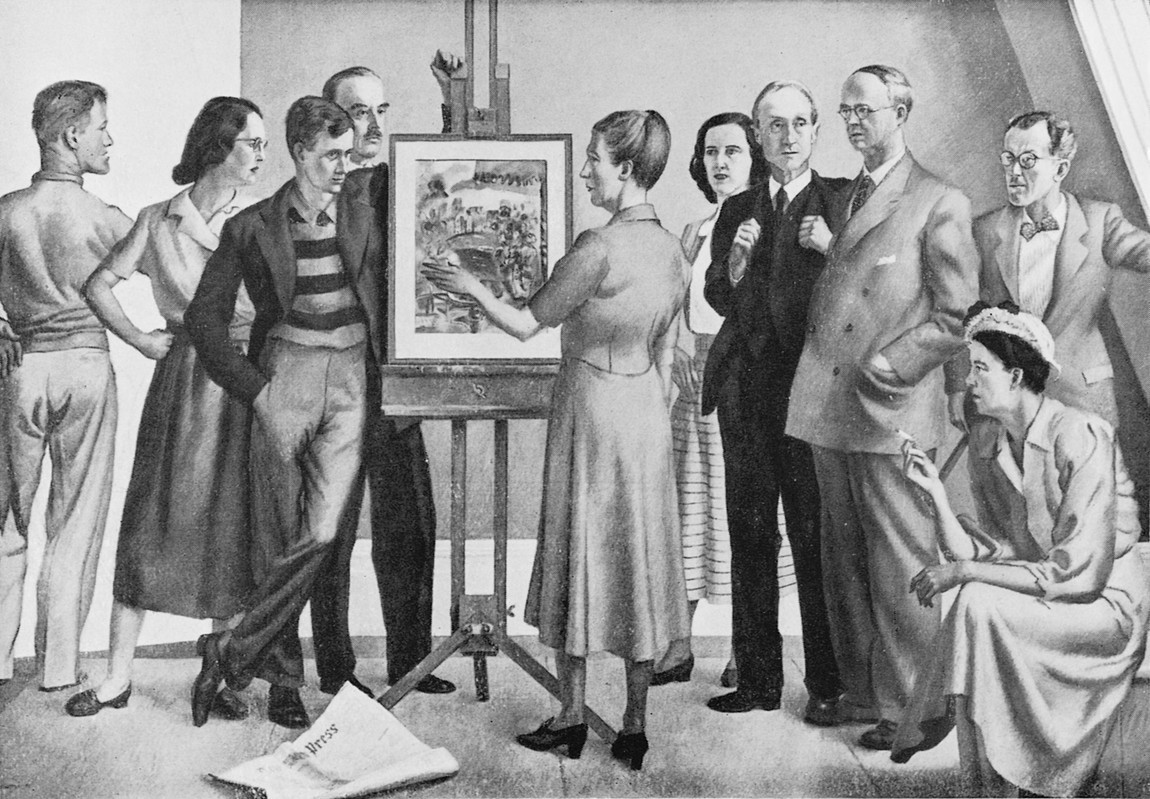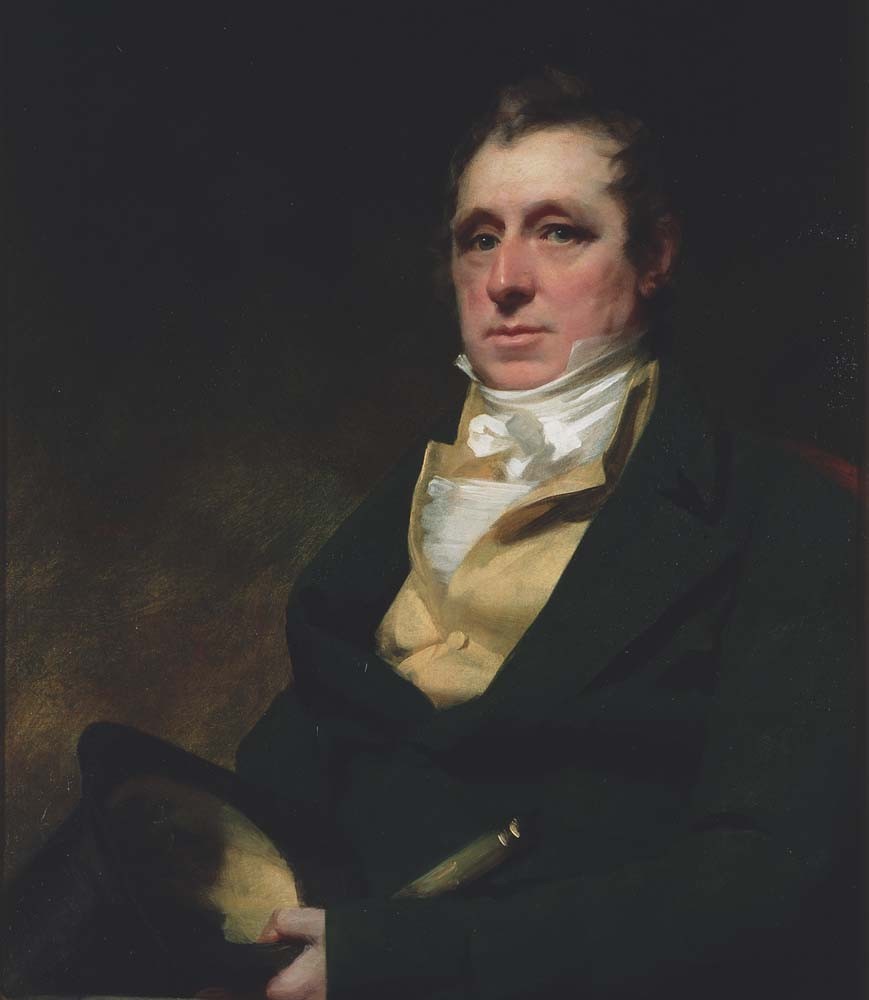Joost Cornelisz Droochsloot
Netherlands, b.1586, d.1666
Soldiers in a Village
- 1640s
- Oil on canvas
- Purchased with the assistance of Adriaan and Gabrielle Tasman, 1996
- 880 x 1190 x 55mm
- 79/293
Tags: animals, buildings (structures), clouds, families, fences, horses (animals), landscapes (representations), people (agents), rifles (long guns), trees, urban landscapes
Between 1618 and 1648, Europe was thrown into turmoil by the Thirty Years’ War – a bitter conflict that raged between Catholic and Protestant states. It was renowned for the vicious fighting often brought about by the large mercenary armies employed on both sides. Here, Droochsloot depicts the confiscations and pillaging by mercenary soldiers as they drive Dutch villagers from their homes.
(New Dawn Fades, November 2018)
Exhibition History
Treasury: a generous legacy, 18 December 2015 - 4 December 2016
Joost Droochsloot’s Soldiers in a Village lays out the enduring theme of the upheavals of war, with families being ejected from their homes by roving soldiers in a Dutch village in the 1640s; an ordeal commonly experienced during the Thirty Years’ War in central Europe (1618–48).
This painting was once owned by the Scottish-born, former Wellington art dealer McGregor Wright, a mayor of Woolston between 1910 and 1921 and a prominent local art supporter. Wright presented the painting to the Christchurch Technical Institute (later Christchurch Polytechnic) in 1935. In 1996 it was purchased for the collection by Gallery patrons Gabrielle and Adriaan Tasman, who also sponsored its conservation and repair.
In the main street of a small rural village, soldiers herd people from the small church in the right foreground, rest beside the loot they have gathered or lead prisoners away. In 1644, when this work was painted, the Thirty Years War was still having an effect on much of continental Europe and peasant villagers were often driven from their homes by small bands of mercenary soldiers. This is a typical 17th century Dutch narrative painting. Joost Cornelisz Droochsloot has used successive thin, transparent layers of paint, a traditional oil technique that allows the artist to depict considerable details of the figures, buildings and the landscape. Little is known of Droochsloot. He was active in Utrecht from 1616 to 1660 and was admitted to the Artists’ Guild of St Luke in 1616 at the age of 40. He was the Guild’s dean from 1623 to 1624. Droochsloot became highly regarded as a painter of landscapes, historical subjects and genre scenes of village life. (Label date unknown)
Focusing on the confiscations and pillaging of mercenary soldiers during the Thirty Years War, this seemingly calm scene shows a group of villagers being driven from their village. The Thirty Years War (1618 - 1648) was a bitter conflict between the French and Hapsburg monarchs over the political domination of Europe. Droochsloot is using the conventional Dutch landscape style and composition. On either side of the scene, tall trees frame the unpaved village street where the overlapping forms and sharply diminishing scale of the buildings establish a sense of pictorial space. The colours are fairly realistic but are influenced by the darker shadows, which are used to define and describe the separate forms of the buildings and figures.
'Soldiers in a Village' was owned for many years by the art dealer and framer McGregor Wright who, in 1935, gifted it to the Christchurch Technical Institute (Christchurch Polytechnic). In 1995 it was offered for sale and the following year purchased through the generosity of Mr and Mrs Adriaan Tasman for the Gallery's collection. (Label date unknown
